To continue my Tobu Nikko Pass journey! Read the first post on the passes and the second post on Tobu World Square.
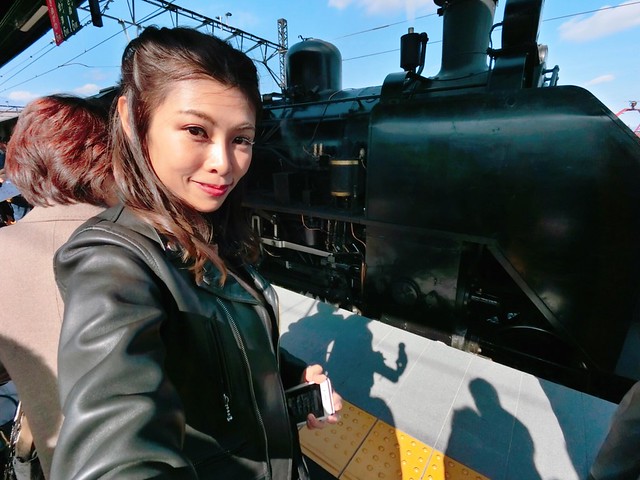
Don’t miss out the nostalgic steam locomotive SL Taiju train ride on your way to Nikko!
Yuba Lunch – ZEN (日光湯波巻き)

A cute store front with a unique entrance!

Beautiful autumn scenery in Nikko.

This yuba specialty restaurant ZEN is located pretty close to the famed Toshogu, you can take a leisure walk to visit after lunch.

ZEN is a cosy, stylish restaurant renovated in modern taste from a traditional farm house. If you love Japanese tea such as matcha and sencha, they serve a variety of really premium tea selections.

They do have different lunch menus, but I’d recommend to just go for the signature “O-ZEN Yuba Set Meal”, priced at 2,000 yen.
The highlight, is of course Nikko’s specialty – beancurd skin called “yuba” in Japanese. The set consists of Yuba-roll with local Tochigi beef, served with wasabi and a home made Yuba dipping sauce, appetizers of the day, simmered beef and burdock with ginger miso soup, pickled local seasonal vegetables. Even the dessert is also made of Yuba! It’s Yuba and soy milk cream “zenzai”.

I looove the Yuba roll so much omg. It’s a little like sushi rolls except that it is rolled with beancurd skin. The rest of the dishes were light, yet flavorful. I never thought tofu skin could taste so rich and milky!
And it’s super healthy too! Yuba is an excellent source of protein and I saw almost no redundant oil used in the cooking of this meal. Apparently even the beef was grilled in its own fats.
Address: 1007, Kamihatsuishimachi, Nikkou-shi, Tochigi, 321-1401
Toshogu (東照宮)
Needs no introduction for many cutural enthusiasts, Toshogu, a shrine closely associated with the history of the Tokugawa Shoguns, is considered the most lavishly decorated shrine in the entire Japan.

Shinkyo Bridge (神橋), a sacred bridge that acts as a gateway to the shrines and temples of Nikko and is one of the three most unusual bridges in Japan.

“Shrines and Temples of Nikko” refering to the Toshogu, Futarasan-jinja shrines and the Rinnoji temple as well as their surroundings, are registered as one of the world heritage sites in Japan.

It’s a brief walk up the hill and did you know? Over here it is exactly as high as Tokyo Sky Tree!!

Reddest maple I’ve ever seen.
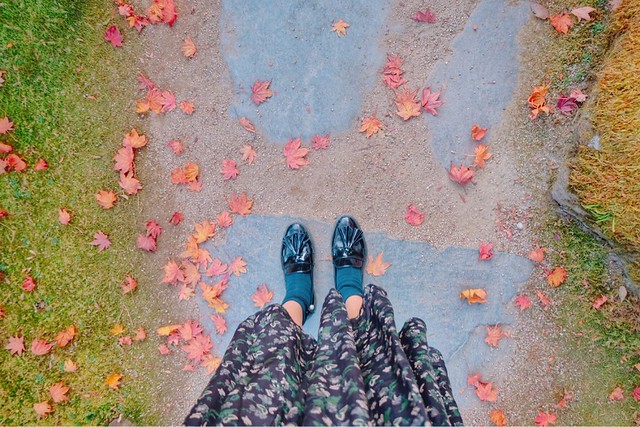
Fallen maple leaves…

We are here at Toshogu!
I felt the same crisp, cold air that I remember from Hakone shrines. Naturally, I started inhaling deeply, taking the calm and freshness in as much as I could.
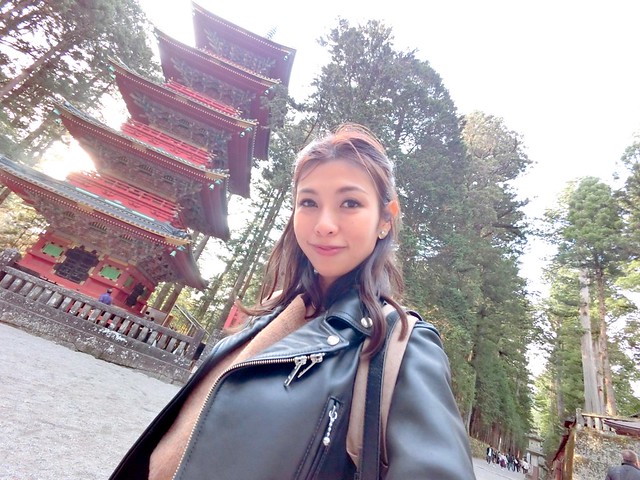
5-story pagoda in front of the main entrance gate.


There were quite a number of visitors due to the maple leaf season, compared to the first time I visited in 2013.

One could spot extremely elaborated wood carvings and large amounts of gold leaf that decorate the buildings in a way not seen elsewhere in Japan.

True enough, I thought the architecture reminded me more of a temple than a shrine.

But interestingly, according to Japan Guide, Toshogu contains both Shinto and Buddhist elements. It was common for places of worship to contain elements of both religions until the Meiji Period when Shinto was deliberately separated from Buddhism. Across the country, Buddhist elements were removed from shrines and vice versa, but at Toshogu the two religions were so intermingled that the separation was not carried out completely.

The wise monkeys that embody the proverbial principle see no evil, hear no evil, speak no evil.
Rinnoji Temple ((輪王寺)
Rinnoji is Nikko’s most important temple. It was founded by Shodo Shonin, the Buddhist monk who introduced Buddhism to Nikko in the 8th century.
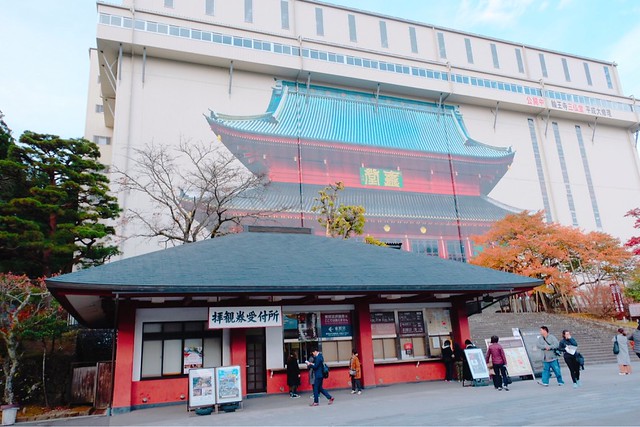
Right now it is under renovation so you could see the massive hoarding construction… which totally doesn’t look like one at all. It’s the prettiest scaffolding structure I’ve ever seen.

The original main building – Sanbutsudo temple looks like this. It is expected to be completed in 2019.

View of the opposite side.

Inside the Sanbutsudo, you can see the three gold lacquered, wooden statues of Amida, Senju-Kannon (Kannon with a thousand arms) and Bato-Kannon (Kannon with a horse head).
When I showed Junya this photo, he pointed to the one of the left and said, “is he reindeer?” Haha.

Even though the building it is under renovation now, it is still open for visitors! And what’s interesting is that you can even have a tour to observe the renovation work being done.

I can’t believe they have build a scaffolding this perfect, complete with spotless glass windows and walkway with handrails just for the observation tour!

What’s more, you get a view like this from the top floor…

Right outside the temple stands a half-golden tree. This tree is said to be the last that turns golden orange in autumn, so when it has shed all its autumn foliage, it means that winter has arrived.

And apparently… it is an extremely rare species of wild cherry blossom tree, called Kongozakura. And guess what? This is the ONLY Kongozakura tree known, and it is said to be 500 years old. If you google 金剛桜, the only result that comes up is this one and only cherry blossom tree at Rinnoji.
Shoyoen (逍遥園)
Shoyoen is a Japanese Style Garden located next to the temple.

I’d say that it was the highlight of the day. It’s particularly famous for its spectacular autumn colors.

Apparently I was about a week late to visit Shoyoen. I was told that the autumn-leaf viewing peak season is over, a lot of leaves have fallen. But still, it looks super beautiful to me!




A pond full of momiji.




Picked up some fallen leaves from the ground.

And lined them up in pretty gradation.

We waited till sunset to catch the beautiful light illumination.
And I took a poster-worth photo:

It was all worth it!!

On the way out, we passed by Rinnoji again, and the hoarding wall painting looks super realistic!
Hope to visit again once it has completed. ^^


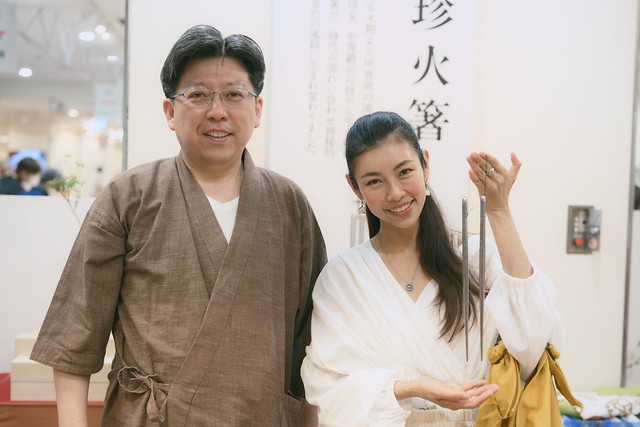












Those red leaves in Shoyoen are incredible! 😱 Such a photogenic spot! ❤️
–
Charmaine Ng | Architecture & Lifestyle Blog
http://charmainenyw.com
Wow… i love all your pictures…. so nice…..
Quinny Zapp Flex Review